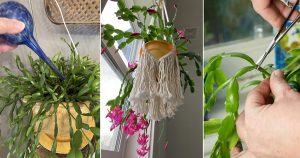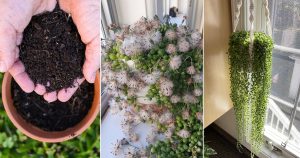Want to know how to wake up a dormant ZZ plant in early spring so that it can flourish in the upcoming season? Check out this guide!
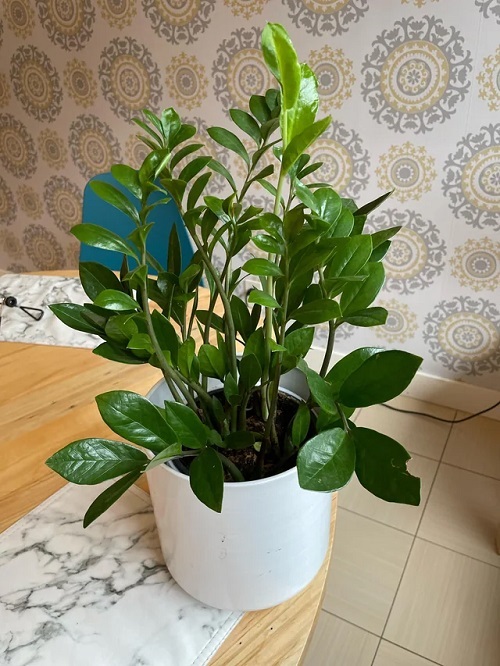
Like most plants the ZZ plant too enters a sleeping mode aka the dormant phase in the winter season until the arrival of spring. During this time it does not grow actively and neither does it push any new growth. As spring arrives, you can take steps to encourage it to wake up and resume growth.
How to Wake Up a Dormant ZZ Plant in Early Spring?
1. Gradually Increase Watering

The first thing to trigger your ZZ plant to break dormancy is to give it water. Give it a nice soaking shower until the excess drains out completely. This will wake it from its winter sleep and send all the signals to prepare for spring!
As temperatures rise in early spring, start watering slightly more often, but avoid overwatering, which can cause root rot. Allow the top inch of soil to dry out between waterings.
Also, make sure to use room-temperature water! Cold water can shock the roots, delaying new growth. Lukewarm water helps the plant transition smoothly into its active phase.
2. Turn On the Lighting Hours!
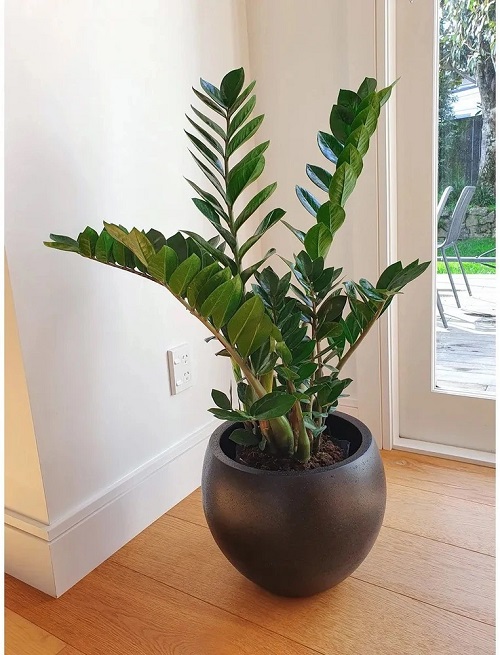
It’s quite simple—winter months have shorter days, and indoor plants mostly adjust themselves to the low-light conditions during this time. But as soon as winter ends, bring your houseplants to bright spaces and move them out of the dark.
This change will trigger the plant to break dormancy. However, ZZ plants prefer bright, indirect light that encourages faster growth. Make sure of that and avoid direct sunlight as you move your plant.
If your ZZ plant has been sitting in a dark corner all winter, don’t move it directly into bright light at once. Gradually introduce it to brighter conditions over a few days to prevent shock.
Tip: You can place your plant closer to a window where it receives filtered sunlight, or supplement with a grow light if necessary.
3. Repot If Necessary
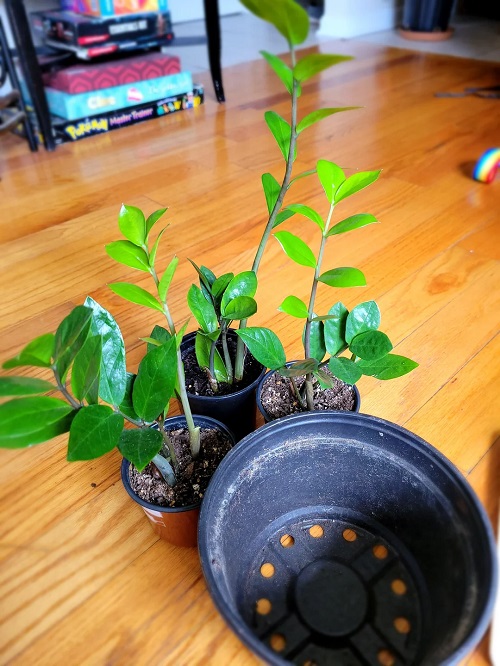
It is a completely optional step. If in case your ZZ plant hasn’t been repotted for a year or has outgrown its container, this option comes into play! It comes with many more benefits as well because spring is the best time to repot your plants.
This is the time when they need more nutrient supply, water, and energy to push new growth. Choose a pot with drainage holes and use a well-draining potting mix made, with a blend of peat, perlite, and sand.
When repotting, check the roots carefully. If you see mushy or blackened roots, trim them off with sterilized scissors before placing the plant in fresh soil. This will prevent rot and promote healthier growth.
4. Feed Some Nutrients.
As they start to transition into the new season, give them a nice jolt of energy! Apply a balanced liquid fertilizer (such as 10-10-10 or 20-20-20 NPK) once a month according to the guidelines on the package during early spring to help replenish all the nutrients lost during dormancy.
This helps to keep the continuous supply of energy going without any hindrance or break. However, make sure to avoid over-fertilizing, as it may lead to salt buildup in the soil.
Start with a half-strength fertilizer for the first feeding to avoid shocking the plant. If your ZZ plant has been slow to wake up, a diluted seaweed or fish emulsion fertilizer can also help stimulate growth naturally.
5. Check the Temperature and Humidity
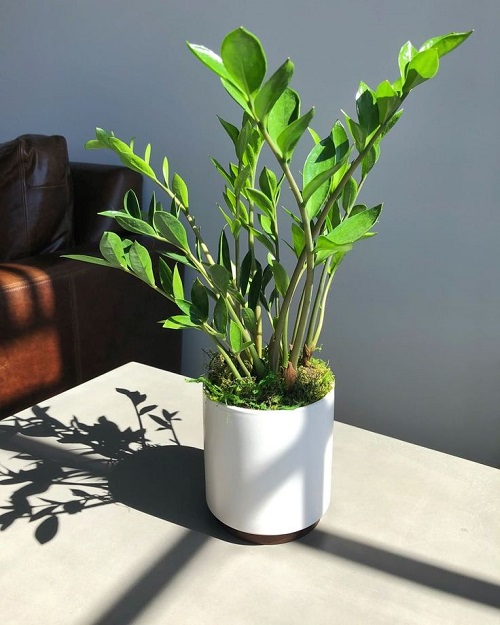
ZZ plants thrive in temperatures between 65°F-75°F (18°C-24°C). With that in mind, wait until the nighttime temperature is above 45°F before moving your plants back outside, and never put them directly in full sun if you’re growing them outdoors. The new leaves won’t be strong enough to handle direct sunlight yet, and it could burn the stem and buds as well.
Start by placing it in a shady spot where it is protected from the wind and rain. Then, gradually move it outdoors to a spot where the morning sun shines for at least 2-3 hours regularly, giving them plenty of time to get used to the intense rays.
Besides, keep them away from cold drafts or sudden temperature fluctuations indoors. If the air is too dry, increase humidity by placing a pebble tray with water near the plant or using a humidifier.
6. Prune Yellow or Dead Leaves
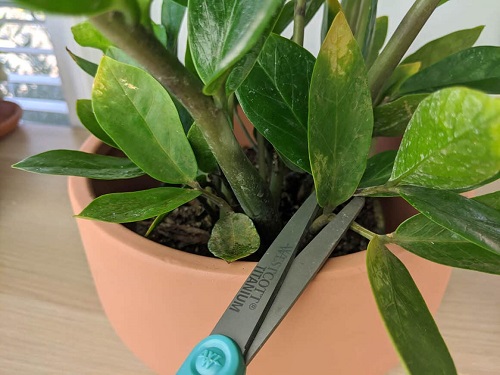
Remove the winter damage as soon as you prep your houseplants for the spring and summer. Anyway, these old or damaged leaves hinder the plant’s energy flow towards new growth. So, use a clean, sharp pair of scissors to cut off any yellowing or brown leaves at the base to redirect the nutrient supply to the desired new growth.
If your ZZ plant has leggy growth from the winter, you can also trim long, stretched stems to encourage bushier growth. Snip just above a node, and new shoots will start growing from there!
So, this is how you can encourage your slow-growing exotic plant to promote and achieve new growth in the active growing period. Follow all the methods for better results and let us know if you have some additional tips from your experience.


